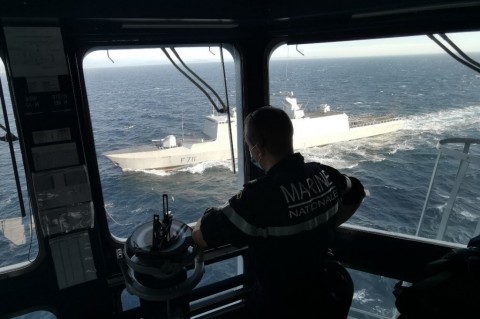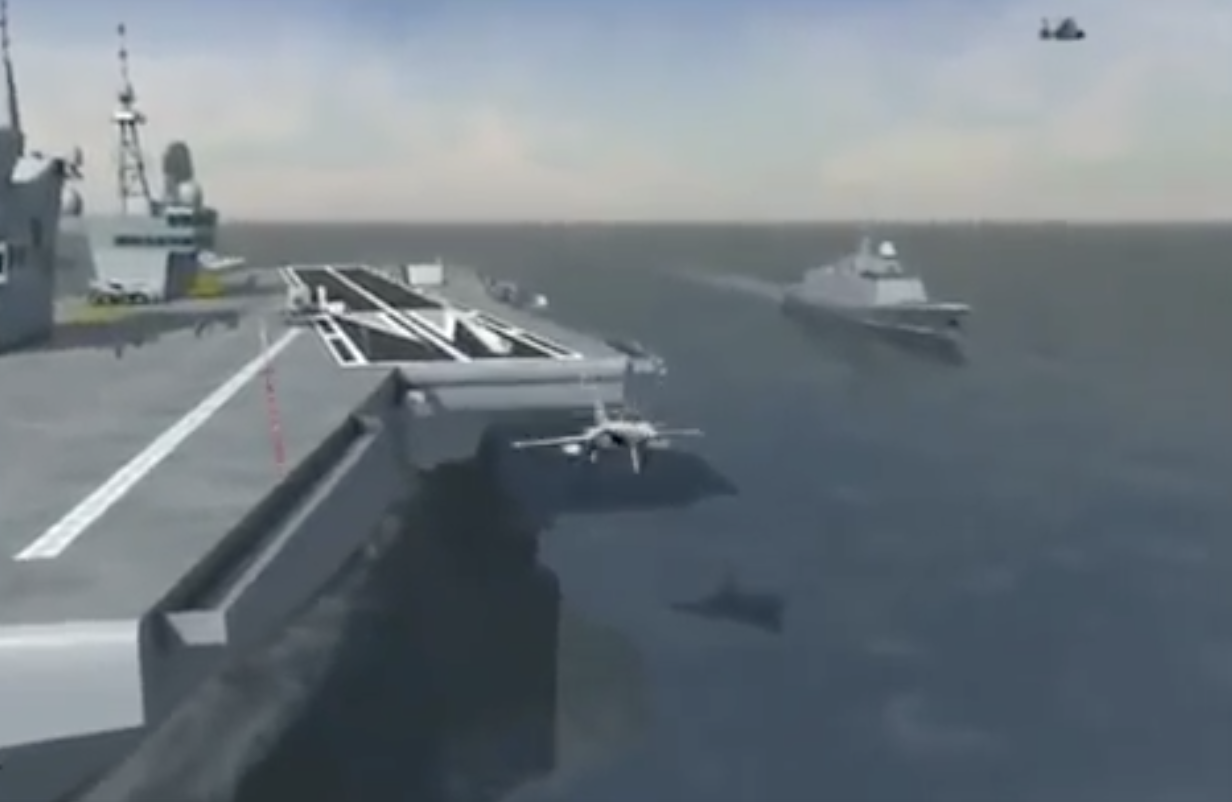(Chris Church – Stars and stripes) Aboard Charles de Gaulle, French and US sailors toast ‘l’interopérabilité’
ABOARD THE CHARLES DE GAULLE — U.S. Navy Lt. Osbaldo walked through the catapult spaces beneath the flight deck, shaking hands with every present member of his French crew, a morning routine he’s grown accustomed to since attaching to the French aircraft carrier Charles de Gaulle.
Today, he’s ensuring his catapult and arresting gear systems are in perfect operational condition for the launch and landing of aircraft supporting the U.S-led coalition fighting the Islamic State group in Iraq and Syria.
Elsewhere on the ship, four other Americans are also adapting to the customs and courtesies of serving on a French naval vessel. They all fill roles designed to improve the ability for the U.S. and French militaries to work together.
The Americans find funny the perception among some of their U.S. Navy colleagues that the assignment must be a pleasure cruise.
“I think that the perception of when you say you’re going to do an exchange tour on a French aircraft carrier is everyone thinks about you driving around on a motorcycle through the Alps with a glass of wine in your hand or something like that,” said Lt. Cmdr. Gerald, a helicopter pilot. “And in reality, it’s a lot of work. It’s a lot of effort to be able to learn the language and be able to participate, and you are away from home the entire time.”
This is the first time Army Capt. Joe Winglemire has been on a naval vessel and he is particularly aware of the amenities and the restrictions. “Clearly the ability to be able to cook delicious food in a nice kitchen is an amenity, but you are also confined to such a small area. The gym is small for 2,000 people. We get to run on the deck maybe once a week. You give up things as well.”
Having other Americans onboard does help the experience, Winglemire said. It’s good to have people to talk to about Thanksgiving or other things going on back in the U.S.
Personnel Exchange Program
Three of the five Americans on board are taking part in an exchange program in which U.S. Navy personnel serve on the French ship or with its air wing while French personnel serve with U.S. naval units.
Currently the nuclear-powered Charles de Gaulle has a U.S. E-2C Hawkeye naval flight officer; Gerald, the helicopter pilot; and Osbaldo, the catapult officer, along with two liaison officers. The Americans in the exchange program, including Gerald and Osbaldo, couldn’t be identified by their full names due to French military regulations.
When the U.S. provided France with the steam catapults and arresting gear systems, part of the deal was to have an American maintenance officer onboard to assist with operations, Osbaldo said.
“There are… (details) when launching and recovering aircraft that are different, but the sequences of operations of the catapult and the arresting gear are the same,” he said. “Other than that, there are some small differences to adjust to the Rafales (French fighter-bombers) out here.”
Beyond building relationships and enhancing the ability of the two countries to work together, the exchanges are an opportunity to share expertise, Gerald said.
He may have faced the biggest challenge of the Americans onboard, having to adapt to a completely different helicopter type. In the U.S. Navy, he flew the Sikorsky SH-60, while on the “Grande Charles,” as the carrier is known in the French navy, he is flying the smaller Eurocopter Dauphin.
“Almost everything is different, down to the direction the rotors on top of the helicopter spins,” he said.
After a year and a half with the French, Gerald has gained insight into the different procedures used by the two services.
“I don’t think there’s anything that either navy needs to start or stop doing tomorrow, but it’s been interesting seeing a lot of the things that I never really considered why we do them, and then to go to a different navy and see that in fact everything is different in a lot of ways,” Gerald said.
Liaison officers
The two U.S. liaison officers share information and facilitate smooth operations with the U.S. military and the coalition fighting the Islamic State group.
“This allows us, between the allies, to coordinate our efforts,” said 6th Fleet Liaison officer Lt. Cmdr. John Amiral.
Amiral, who joined the U.S. Navy because of the Sept. 11 terrorist attacks, feels a special connection to the crew because the ship has been deployed in response to recent terrorist attacks on French soil.
“To be able to defend the values, the liberties and the freedoms that we share as allies … I think that’s the biggest thing that draws us all together,” he said.
Amiral helped ensure the USS Mason’s easy transition into the French task force — the destroyer officially joined Task Force 473 late last month. He will also help smooth operations with the USS Dwight D. Eisenhower strike group in the eastern Mediterranean.
Winglemire’s job is to coordinate between Charles de Gaulle pilots and joint terminal attack controllers, or JTACS, and those in charge of the ground operations in Iraq and Syria. (…)
READ FULL STORY >>> www.stripes.com
Photo © Chris Church, ibid (Refueling of a Dauphin Helo)












